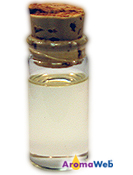Rosalina Essential Oil
Melaleuca ericifolia

Description
Rosalina Essential Oil is sometimes referred to as Lavender Tea Tree or Swamp Paperbark Essential Oil. Because its botanical name is Melaleuca ericifolia, Rosalina is also sometimes referred to as Ericifolia Essential Oil. As with all essential oils, it's important to doublecheck the botanical name of the oil that you are working with.

Rosalina Essential Oil is steam distilled from the leaves of the Australian tree, Melaleuca ericifolia, commonly known as the Swamp Paperbark. Trees in the genus Melaleuca such as Tea Tree, Cajeput, Niaouli and Rosalina have bark with a paper-like characteristic, so they are commonly referred to as paperbarks.
Rosalina Essential Oil is primarily comprised of the monoterpenol linalol and the oxide 1,8 cineole. These two constituents contribute to Rosalina Essential Oil's ability to assist with respiratory issues and allergies while also helping to calm and uplift the emotions.
Aromatically, Rosalina Essential Oil is a top note that has a fresh, lemony, camphorous aroma that you may prefer to that of the more commonly available Tea Tree Essential Oil or Eucalyptus Globulus Essential Oil. It blends well with citrus essential oils particularly Lemon Essential Oil, floral oils especially Lavender Essential Oil and oils in the wood and herbaceous families.
For emotional applications, I tend to think of Rosalina Essential Oil as being an adaptogen as it's refreshing oil that isn't overly stimulating. It can support a sense of calm and relaxation when needed.
Rosalina Essential Oil Benefits and Uses
- Restlessness
- Nervousness
- Irritability
- Acne
- Pimples
- Insect Bites
- Respiratory Support
- Allergies
- Sinus Congestion
- Sore Throats
- Coughs
- Inflammation
- Household Cleaning
- Relaxation
Sources: Andrea Butje, The Heart of Aromatherapy (Carlsbad, CA: Hay House, Inc., 2017), 102. Valerie Ann Worwood, The Complete Book of Essential Oils and Aromatherapy, 25th Anniversary Edition (Novato, CA: New World Library, 2016, 616.
Botanical Name of Rosalina Essential Oil
Plant Family
Common Method of Extraction
Steam Distilled
Plant Part Typically Used
Color
Clear to Pale Yellow
Consistency
Thin
Perfumery Note
Top
Strength of Initial Aroma
Medium - Strong
Aromatic Description
Rosalina Essential Oil smells fresh, lemony, slightly camphorous and floral.
Sustainability and Conservation Status
Least Concern
Source: https://www.iucnredlist.org/species/177374613/177374615
To learn more about the conservation status of essential oil bearing plants and how to use the IUCN Red List of Threatened Species, please refer to AromaWeb's Guide to Essential Oils and Sustainability.
Major Constituents of Rosalina Essential Oil
- Linalol
- 1,8-Cineole
- a-Pinene
- Terpinolene
- (+)-Limonene
Source: Private Communication: McGilvray, 1999. Source cited in Robert Tisserand and Rodney Young, Essential Oil Safety (Second Edition. United Kingdom: Churchill Livingstone Elsevier, 2014), 404.
Rosalina Essential Oil Safety Information
Tisserand and Young do not indicate any special precautions when using Rosalina Essential Oil. Reading Tisserand and Young's full profile is recommended. [Robert Tisserand and Rodney Young, Essential Oil Safety (Second Edition. United Kingdom: Churchill Livingstone Elsevier, 2014), 429.]
General Safety Information
Do not take any oils internally and do not apply undiluted essential oils, absolutes, CO2s or other concentrated essences onto the skin without advanced essential oil knowledge or consultation from a qualified aromatherapy practitioner. For general dilution information, read AromaWeb's Guide to Diluting Essential Oils. If you are pregnant, epileptic, have liver damage, have cancer, or have any other medical problem, use oils only under the proper guidance of a qualified aromatherapy practitioner. Use extreme caution when using oils with children and be sure to first read the recommended dilution ratios for children. Consult a qualified aromatherapy practitioner before using oils with children, the elderly, if you have medical issues or are taking medications. Before using this or any essential oil, carefully read AromaWeb's Essential Oil Safety Information page. For in-depth information on oil safety issues, read Essential Oil Safety by Robert Tisserand and Rodney Young.
Shelf Life
Important Information About the Profiles
The essential oil information provided on AromaWeb is intended for basic educational purposes only. The references to safety information, test results, constituents and percentages is generalized information. Essential oils can vary greatly in composition. The data is not necessary complete and is not guaranteed to be accurate. The essential oil photos are intended to represent the typical and approximate color of each essential oil. However, essential oil composition and color can vary based on harvesting, distillation, age of the essential oil and other factors. Profiles for several CO2 Extracts and absolutes are included within the directory, and are denoted as such.
